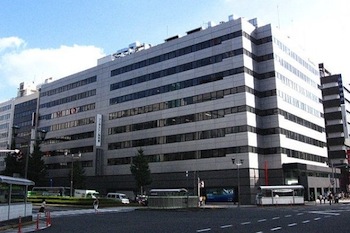 Tyre manufacturer Bridgestone has introduced a global sustainable procurement policy to ensure compliance with environmental laws and regulations, respect for human rights and other considerations.
Tyre manufacturer Bridgestone has introduced a global sustainable procurement policy to ensure compliance with environmental laws and regulations, respect for human rights and other considerations.
The guidelines, announced on February 5th, are applicable to all purchased materials and services and to all suppliers globally, the Japanese company said. The policy will help identify and evaluate qualified suppliers, promote best practice and serve as a communication and improvement tool for the industry, it added.
“Our new policy is a critical step in realising the Bridgestone group’s global corporate social responsibility commitment, Our Way to Serve, which provides a framework for how we do business, develop products and interact with customers and communities,” CEO Masaaki Tsuya said.
“We expect our suppliers and partners to work with us in pursuit of sustainable supply chains – efforts which are never-ending and which require collaboration with all industry players, including communicating with the various audiences in order to generate broader public awareness,” continued Tsuya.
The new policy incorporates the company’s goal of using 100% sustainable materials by 2050 and combines previous company guidelines into a single document which sets minimum requirements for conducting business with it, as well as preferred practices that can contribute to faster realisation of sustainable supply chains.
“As a large user of natural rubber, the policy describes Bridgestone’s expectations with respect to critical issues within the complex global natural rubber supply chain,” the company said.
The extensive document addresses four major areas of focus: transparency, including traceability and good governance; compliance – adhering to laws and regulations in the countries and regions in which Bridgestone conducts business; quality, cost and delivery, and innovation; and sustainable procurement practices, including environmentally responsible procurement. That covers such issues as compliance with environmental laws and regulations, respect for human rights, water use, land use and conservation, health, safety, disaster prevention and resilience.
While drawing up the final guidelines, Bridgestone, whose headquarters (pictured) are in Tokyo, sought input from materials suppliers, natural rubber farmers, key customers and others to ensure the policy reflects industry standards and best practice and is supported by an effective implementation and communication plan. Available in 12 languages, it will be implemented, governed and enforced regionally.
During the next 18 months, the company will work with suppliers to ensure they have received and understood the policy. They will also be given a self-assessment questionnaire.
Additionally, Bridgestone is working on supplier assessment for traceability of natural rubber and will work with others to ensure ongoing monitoring of supplier compliance.

























![Global[1]](https://d3n5uof8vony13.cloudfront.net/Pictures/web/a/d/s/global1_726550.svgz)









